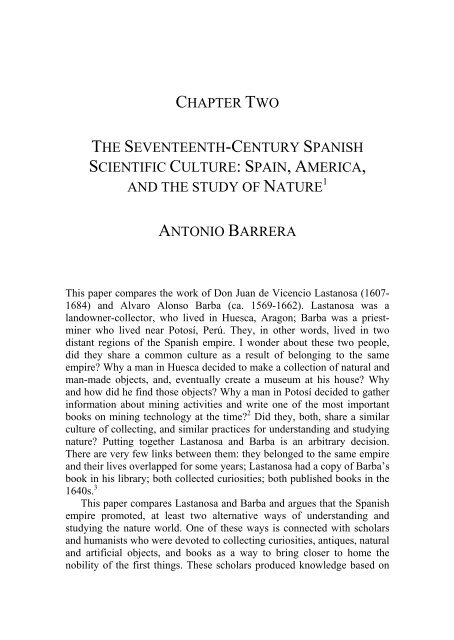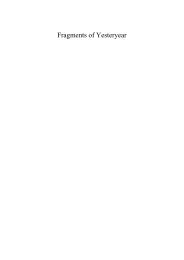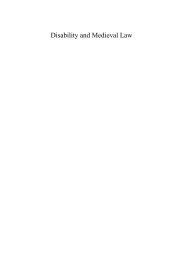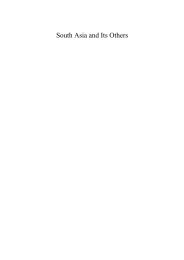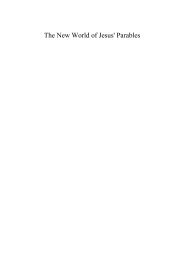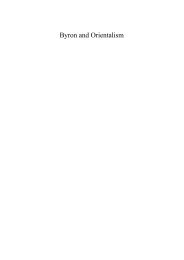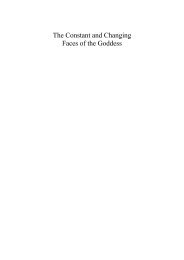The Gentleman, the Virtuoso, the Inquirer - Cambridge Scholars ...
The Gentleman, the Virtuoso, the Inquirer - Cambridge Scholars ...
The Gentleman, the Virtuoso, the Inquirer - Cambridge Scholars ...
You also want an ePaper? Increase the reach of your titles
YUMPU automatically turns print PDFs into web optimized ePapers that Google loves.
CHAPTER TWO<br />
THE SEVENTEENTH-CENTURY SPANISH<br />
SCIENTIFIC CULTURE: SPAIN, AMERICA,<br />
AND THE STUDY OF NATURE 1<br />
ANTONIO BARRERA<br />
This paper compares <strong>the</strong> work of Don Juan de Vicencio Lastanosa (1607-<br />
1684) and Alvaro Alonso Barba (ca. 1569-1662). Lastanosa was a<br />
landowner-collector, who lived in Huesca, Aragon; Barba was a priestminer<br />
who lived near Potosí, Perú. <strong>The</strong>y, in o<strong>the</strong>r words, lived in two<br />
distant regions of <strong>the</strong> Spanish empire. I wonder about <strong>the</strong>se two people,<br />
did <strong>the</strong>y share a common culture as a result of belonging to <strong>the</strong> same<br />
empire? Why a man in Huesca decided to make a collection of natural and<br />
man-made objects, and, eventually create a museum at his house? Why<br />
and how did he find those objects? Why a man in Potosí decided to ga<strong>the</strong>r<br />
information about mining activities and write one of <strong>the</strong> most important<br />
books on mining technology at <strong>the</strong> time? 2 Did <strong>the</strong>y, both, share a similar<br />
culture of collecting, and similar practices for understanding and studying<br />
nature? Putting toge<strong>the</strong>r Lastanosa and Barba is an arbitrary decision.<br />
<strong>The</strong>re are very few links between <strong>the</strong>m: <strong>the</strong>y belonged to <strong>the</strong> same empire<br />
and <strong>the</strong>ir lives overlapped for some years; Lastanosa had a copy of Barba’s<br />
book in his library; both collected curiosities; both published books in <strong>the</strong><br />
1640s. 3<br />
This paper compares Lastanosa and Barba and argues that <strong>the</strong> Spanish<br />
empire promoted, at least two alternative ways of understanding and<br />
studying <strong>the</strong> nature world. One of <strong>the</strong>se ways is connected with scholars<br />
and humanists who were devoted to collecting curiosities, antiques, natural<br />
and artificial objects, and books as a way to bring closer to home <strong>the</strong><br />
nobility of <strong>the</strong> first things. <strong>The</strong>se scholars produced knowledge based on


